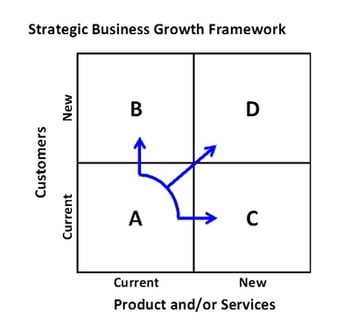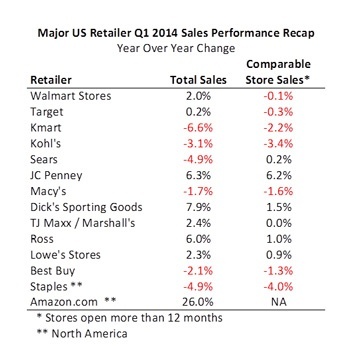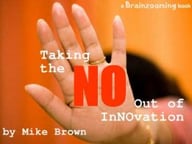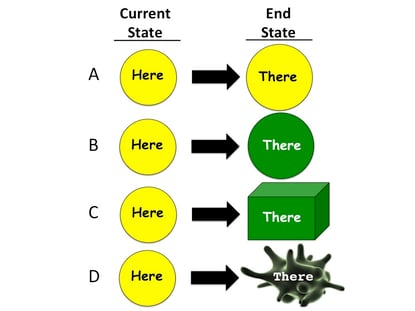Data-savvy marketing & innovation expert, Woody Bendle takes a look in this guest post at the relationship between customer centricity and growth, or more specifically the lack of both among a select group of traditional retailers.
And just so you know, beyond being a fantastic resource on brand strategy and innovation, Woody has set a new high bar for guest contributors at Brainzooming. He delivered this most recent guest blog post along with a slab of his homebbqed ribs! So, for all the people who send us emails about wanting to guest post with "incredible, unique content," the question is, "How good are you at grilling?"
Now, here's Woody!
Brand Strategy - Customer Centricity and Growth by Woody Bendle
Many of America’s largest retailers recently reported financial results falling short of analysts’ (and undoubtedly their own) expectations. The table below recaps the highlights (or low lights) among select national retailers.
Many of them attributed this winter’s unusually cold weather and continuing economic struggles among core customers for their economic shortfalls. But digging deeper into their numbers shows more to the story. Many of America’s largest retailers are finding it much harder to generate profitable growth in the traditional manner, which has been opening stores in new (domestic and international) markets, expanding product assortments, and becoming more effective and efficient through operational and executional improvements. Or as I like to say, just getting bigger and better.
The graphic below, which I use when discussing business growth strategy, illustrates the concept of growing a business is pretty straight forward. As the businesses above demonstrated this past quarter, however, it isn’t always easy.

To grow any business, you have four options:
- Get existing customers to buy more of current products or services
- Get new customers (i.e., in different markets) to buy current products or services
- Develop or find new products or services for existing customers
- Develop or find new products or services for entirely new customers
For roughly fifty years, growth path for nearly all of the retailers above has focused on cells A, B, and to some extent C (i.e., Walmart and Target expansions into grocery). For much of this time, most of these businesses have had incredible success, but growth has become harder the past several years.
What’s changed?
Two things that are fundamentally different about today’s business environment:
1. Market power has shifted away from many businesses to the consumer, due to radical decreases in the costs associated with information and geography.
The internet and mobile technologies have greatly improved the consumer’s ability to be better informed (about alternatives and competitive prices globally) and have enabled disruptive businesses to emerge (i.e., amazon.com – note its 26% growth in North America this past quarter). These have diminished the need for customers to travel to a physical store to make a purchase.
2. The great recession fundamentally changed the consumer mindset, resulting in a “new normal” in consumer behavior.
This is best summed up by The Future’s Company:“Consumers everywhere … are working from a new orientation about what they want and how they buy… [They] are now battle hardened, having found ways to survive and even thrive on the new opportunities a more competitive market has yielded.”
The result is the traditional path to growth - getting bigger and/or getting better - is nearing its limit for many businesses. This necessitates businesses rethinking their growth strategies, with adopting customer-centric business practices as one avenue for new growth!
Growth through Customer Centricity
Something fascinating about the Strategic Business Growth Framework is the customer/consumer is actually present in every cell. Through my own consumer experiences, however, it doesn’t often feel like many businesses realize this. How many of you have heard a store associate say something like, “I don’t know how I’m going to get my job done with all of these customers in here”?
Many businesses are either product or operationally focused. Nearly every decision they make starts with what they sell (or plan on selling), or how they go about doing what they do. These businesses put what they do and how they do it in front of whom they do it for.
This is a primary reason why it has taken so long for many traditional businesses to embrace fully integrated multi-channel or omni-channel practices. While most understand it makes sense to the consumer, they haven’t figured out how to make it make (financial) sense given what they already do, how they currently do it, and how they currently measure all of it.
A customer centric business, however, thinks exactly opposite. Its decisions start with the customer. Activities (and incentives) are aligned to profitably deliver goods or services maximizing value for customers – and, in turn, their shareholders. Once they identify an opportunity to create more net value over time, they systematically figure it out, sometimes at the expense (temporarily or permanently) of existing business.
It’s all about creating new customer and shareholder value!
The Next Customer Centricity Step Is Yours
My intent is to shine a light on a different path, not provide the playbook for becoming a customer centric organization.
If you want to become more customer centric, here are eleven questions to help decide if customer centricity is right for you and to help on your journey:
- Why do my customers come to us vs. the competition?
- What value do we provide to our customers today?
- What are all our customers’ needs?
- Have our customers’ needs changed? How and why?
- What customer needs do we currently meet / exceed today?
- How well are all of their needs being met by the marketplace today?
- Are there new competitors who are satisfying some of our customers’ needs in a different way?
- What can we do better (or differently) to uniquely meet and exceed those needs today and tomorrow?
- What else can we do to create even more value for our customers?
- Are we willing to put customer’s interests at the center of our decisions and processes?
- How much are we willing to change? Really?
And as you answer question 11, don’t confuse how much change you are willing to undergo with how much that change is noticed by customers and whether they value it.
Those are three separate questions for all you operationally focused people. There’s no “extra credit for efficiency” in trying to answer them all together. To the contrary, you’ll definitely be penalized for thinking efficiency at the expense of thinking about your customer! - Woody Bendle
If you enjoyed this article, subscribe to the free Brainzooming blog email updates.
Download the free ebook, “Taking the NO Out of InNOvation” to help you generate fantastic creative thinking and ideas! For an organizational innovation success boost, contact The Brainzooming Group to help your team be more successful by rapidly expanding strategic options and creating innovative plans to efficiently implement. Email us at info@brainzooming.com or call us at 816-509-5320 to learn how we can deliver these benefits for you.





